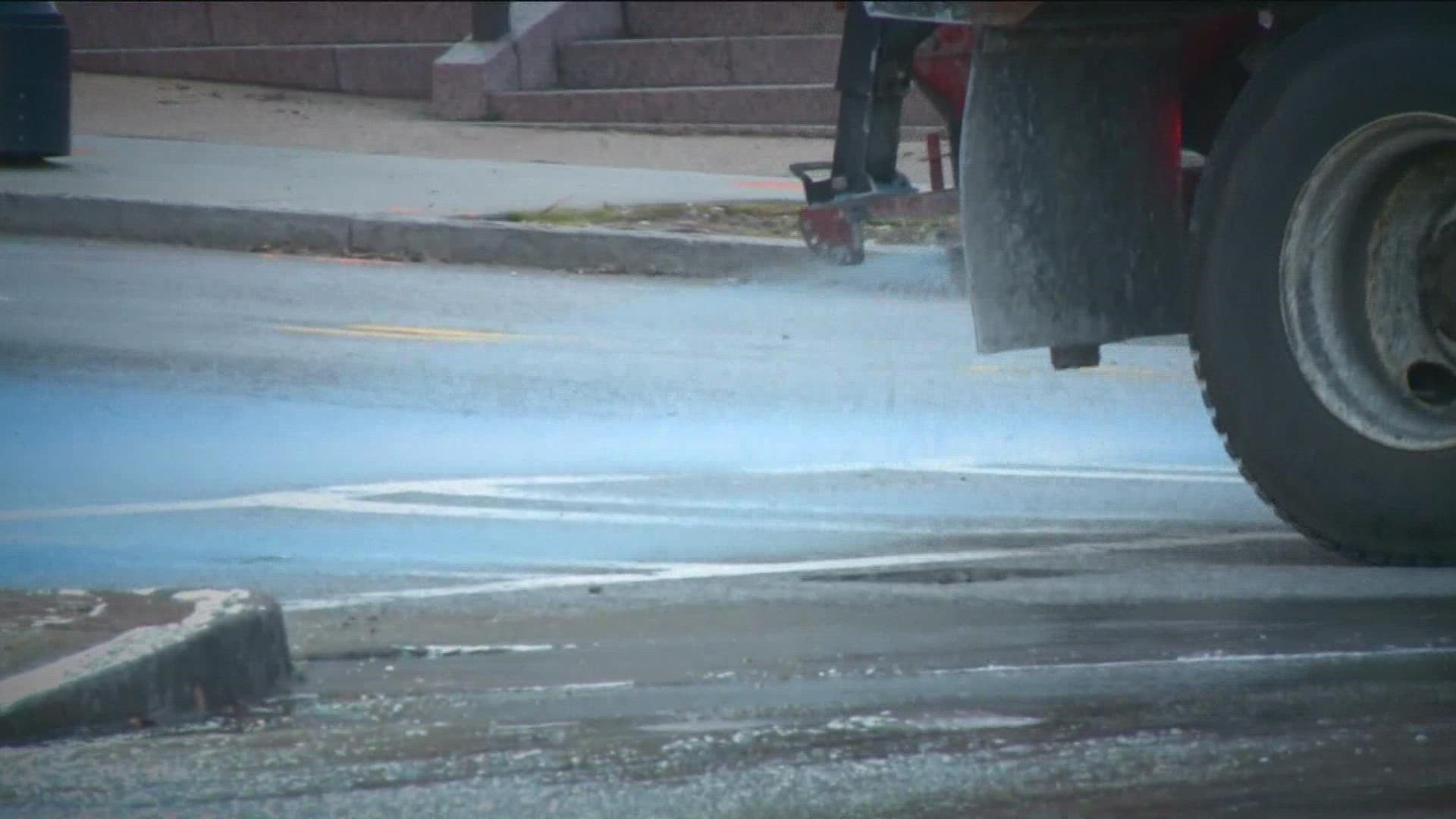ATLANTA — The Georgia Department of Transportation is preparing for another round of winter weather with a supply of road salt that is unique due to its color.
As the frigid temperatures turn you blue from head to toe, remember, you’re not alone. Winter can turn the streets and highways of Georgia a shade of blue.
To protect Georgia roads from snow and ice, GDOT uses a combination of mostly white salt mixed with some blue.
“It is not a gender reveal,” GDOT’s Natalie Dale joked. “It is that blue salt. It does have a benefit to it."
Here’s why blue salt can be helpful when battling winter weather.
Several agencies around the country have turned to blue salt for road treatment during the winter. Our crews saw some of it at the city of Atlanta’s salt barn as crews prepared for our last winter storm.
There are a variety of reasons for using it.
Some of GDOT’s salt supply is treated with chemicals to keep it from clumping. Think about the box of salt you’ve kept around for too long. Moisture will make it rock hard.
The chemicals used to keep road salt from doing that will turn it blue.
“You’ve got salt in these barns that sits through hurricane season, that sits through warm Georgia summer, and so some of the salt in that barn can get compacted,” said Dale. “Sometimes having that blue salt that has that anti-clumping film can be of a benefit.”
Some cities around the U.S. color their salt so neighbors know their streets have been treated.
It also lets crews know a street has already been treated so they don’t waste time and money spreading more salt unnecessarily.
GDOT doesn’t need blue salt to keep up with where their crews have been. The agency has GPS technology that lets them know where and when their salt trucks have been on the job.

